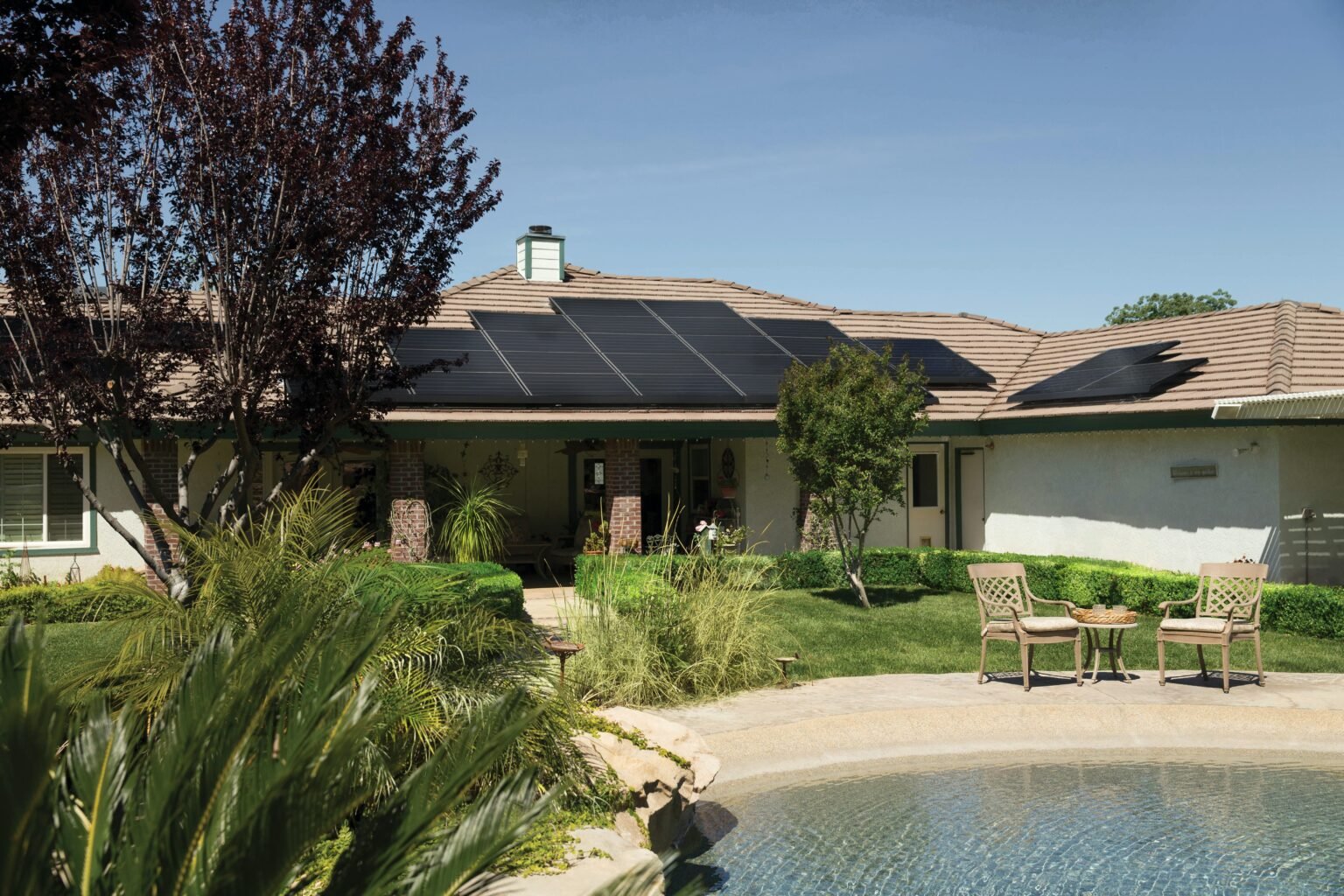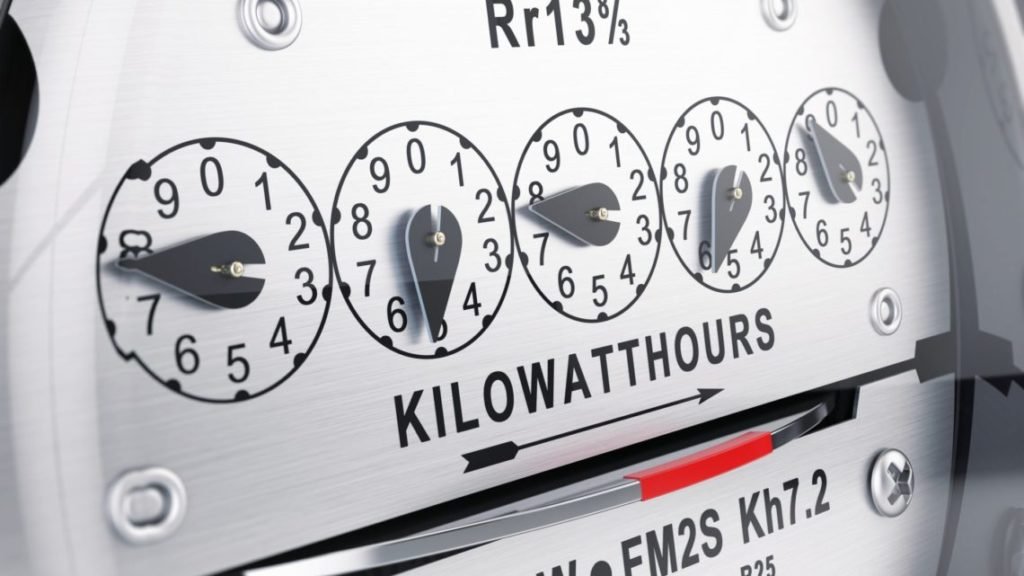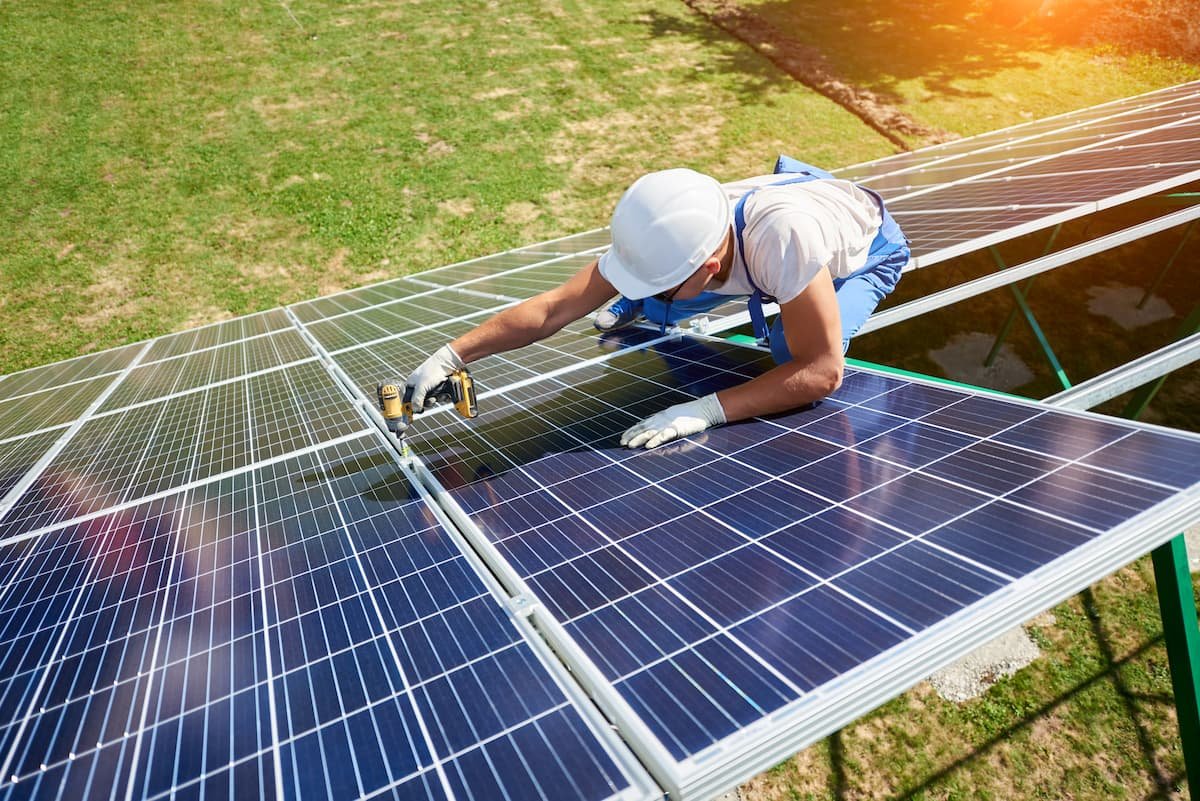
Everything you need to know before buying a Solar Panel
To maximize energy efficiency , it is essential to carry out intelligent energy consumption. The use of renewable energies such as solar energy through photovoltaic solar panels is a good example of energy efficiency.
Everything you need to know before buying a Solar Panel
Therefore, in this case we will talk about everything you need to know before buying a solar panel .
From what type of solar panel to choose to its necessary maintenance, we will see how these photovoltaic solar panels work and how they contribute to sustainable architecture.
What are Photovoltaic Solar Panels?
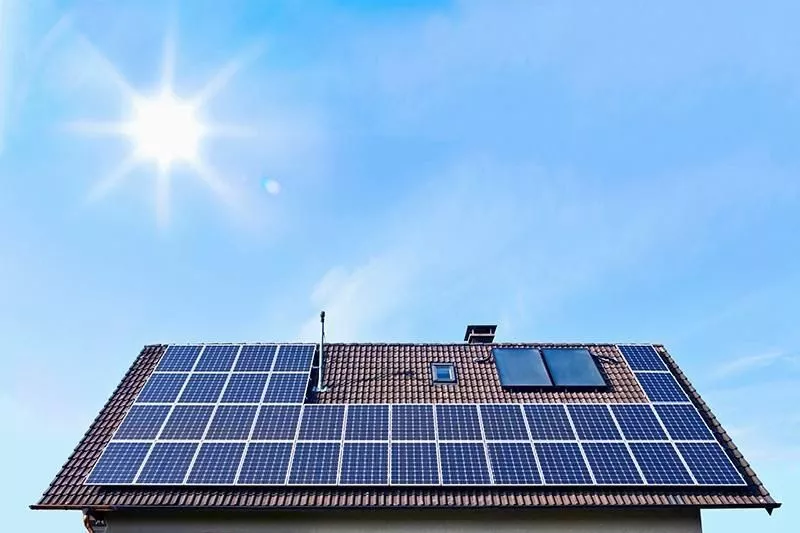
Solar panels, also known as photovoltaic panels , are devices that convert sunlight, made up of particles called photons, into electricity to power electrical charges.
This is not all, solar panels can be used for numerous applications including remote power systems for cabins, telecommunications equipment, sensors and to produce electricity for residences and businesses.
Solar panels are a sustainable alternative that saves energy and can help reduce both pollution and electricity bills. They collect clean renewable energy in the form of sunlight and convert that light into electricity.
How do solar panels work?
Solar panels are made up of several individual solar cells made up of layers of silicon, phosphorus, and boron. Phosphorus provides the negative charge while boron provides the positive charge .
By absorbing photons from sunlight, solar panels initiate an electrical current. The energy resulting from this process allows the electrons to break out of their atomic orbits and be released into the energy field generated by the solar cells which then pull these electrons in a directional current. This process is called the photovoltaic effect .

The excess electricity generated is distributed to the main electrical network by amortizing the electricity use at night .
How many Photovoltaic Solar Panels do I need?
The number of photovoltaic solar panels needed for a home depends on its energy needs. You can calculate your energy needs by averaging the number of kilowatts you use on your electricity bills. It should also be noted that power needs vary by season.
You have to make sure that the number of photovoltaic panels can produce and store enough energy to cover your needs.
Tips for Installing Solar Panels
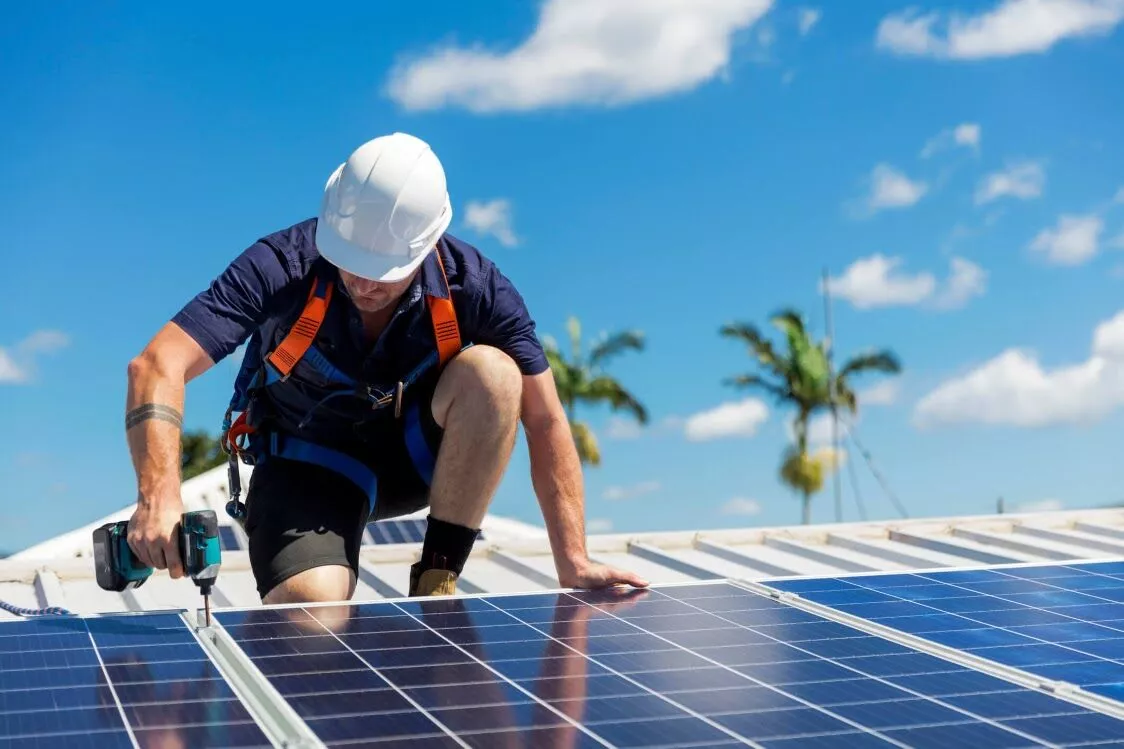
Installing a photovoltaic solar panel is simple and, although its installation cost can be high, buying solar panels pays off its cost in the long term.
Before installing a solar panel it is important to consult an expert. Getting help from someone who knows the process will help you avoid making mistakes.
It is also important to consider how much space you have available for solar panel installation. As well as its location on the ceiling, on the floor or both. For this, the movement of the sun must be studied and consider if the selected location receives constant sunlight. First of all, you have to avoid placing the photovoltaic panels in areas that have shadows.
In the case of placing them on the roof, it must be verified that the roof is strong enough to support the weight of the solar panels.
Is a Photovoltaic Solar Panel and a Thermal Panel the same?
Confusing a photovoltaic solar panel with a thermal solar panel is a common mistake since at first glance they look very similar. However, there are many differences between solar panels and thermal panels .
The main difference is that photovoltaic panels generate electricity while thermal panels are used to generate domestic hot water and heating.
Types of Solar Panels
The price of a photovoltaic solar panel depends on its size, its efficiency , the type of photovoltaic panel and even the year in which it is purchased. As the years go by, solar panels are cheaper.
On the other hand, the efficiency of a photovoltaic panel is mainly determined by the amount of silicon it contains. That is, the purer the silicon, the better the solar energy is converted into electrical energy.
Solar photovoltaic panels are generally classified into three types: monocrystalline , polycrystalline (also known as multicrystalline), and thin -film . These types of panels vary both in their manufacturing process and in their appearance, performance, price and installations for which they are best suited. Depending on the installation, one option may be more recommended than the others.
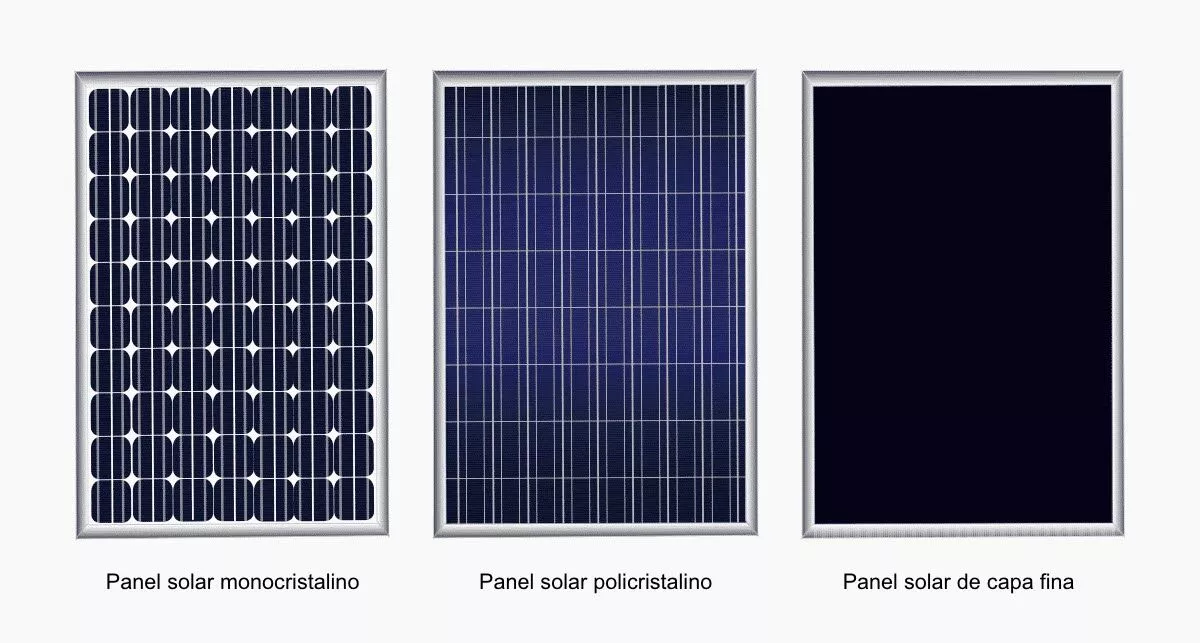
Monocrystalline panels
Monocrystalline solar panels are easy to distinguish by their uniform appearance and dark blue or black color. This type of panels have a high silicon purity . They are made with blocks of silicon or cylindrical ingots.
Then, to reduce manufacturing costs and optimize performance, monocrystalline photovoltaic cells are cut to make silicon wafers. This cutout gives it its characteristic rounded – corner look .
The main difference between a monocrystalline solar panel and a polycrystalline solar panel is the composition of the silicon crystal in its cells. Monocrystalline solar cells are made up of a single type of silicon crystal while polycrystalline cells grow in different directions made up of a set of different crystals joined together.
Its efficiency is the highest with respect to the other types with 18-20%. The cost of its manufacture has been decreasing until practically reaching the price of polycrystalline panels, offering a better production for the same size.
Polycrystalline panels
Unlike monocrystalline solar panels, polycrystalline solar panels do not employ the Czochralski manufacturing process . In other words, to manufacture this type of panel, raw silicon is melted and poured into a square mould. Then let it cool and cut into square slices.
With respect to monocrystalline cells, their production process has a lower cost which means that their price is also reduced. Polycrystalline solar panels are cheaper but have lower efficiency than monocrystalline panels.
High temperatures can have a negative effect on polycrystalline cells, so its use is not recommended in very hot areas.
thin layer panels
These thin film solar panels are made by depositing several layers of photovoltaic material on a base. This base can be made up of a glass-like substrate, so rigid solar panels can be used outdoors, or plastic, for flexible panels for less conventional use.
Depending on the material used, thin film panels of amorphous silicon, cadmium telluride, copper, indium, gallium and selenium or organic photovoltaic cells can be found.
Depending on their type, thin film solar panels have an efficiency of between 7-13%. However, its demand is increasing due to its great potential for domestic use .
Manufacturing costs are considerably lower due to the lower amount of semiconductor material present in these solar panels. In such a way that they have a lower efficiency compared to the other types of panels.
Maintenance of a Photovoltaic Solar Panel
In general, photovoltaic solar panels require very little maintenance to function. Periodic light cleaning is all it takes to keep leaves and other debris from blocking the sun’s rays.
More extensive maintenance may be required during periods of heavy snowfall or if the power output of the solar panels decreases.
Thanks to the tilt of some solar panels, rain may be able to wash away debris that accumulates on them. However, in periods of drought it is important to clean them manually. This cleaning can be done between two and four times a year . This is not a complicated job, just use a leaf blower or a garden hose and the solar panels will be clean and in good condition for use.
On the other hand, to clean the snow from the solar panels, it can be removed either with warm water or with a brush. The important thing is not to use hot water since solar panels are made of tempered glass and the extreme temperature difference can crack them.
If you want to make sure your solar panels are performing at their best, you can install a solar panel monitoring system to track how much energy they produce. This will allow you to see how external factors affect performance and how the efficiency of solar panels is maintained over the years.
The monitoring system is also responsible for alerting if a solar panel breaks or malfunctions so that it can be fixed or the solar panel recycled and replaced if necessary.

